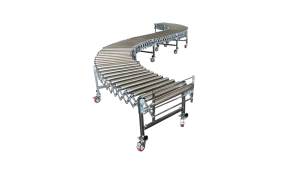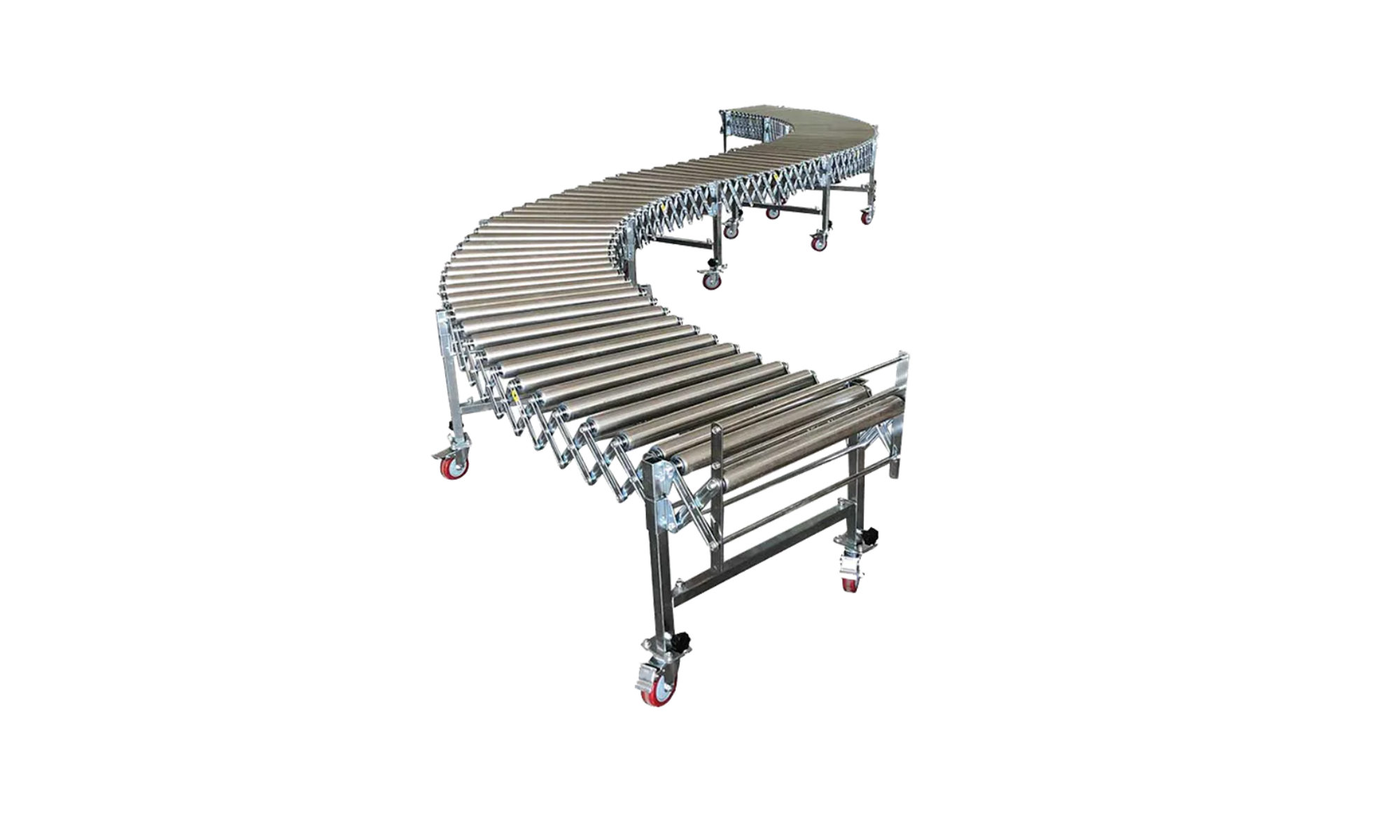A flexible gravity roller conveyor is a versatile and efficient solution for material handling in various industries. It consists of a series of rollers, typically mounted on a flexible frame that can be expanded, contracted, and curved to fit different spaces and applications. Here’s a detailed look at the components, uses, benefits of flexible gravity roller conveyors:

Components
- Rollers: Cylindrical components that allow items to roll along the conveyor. They can be made from materials such as steel, aluminium, or plastic.
- Frame: The structure that supports the rollers. It is typically made from metal and designed to be flexible, allowing the conveyor to bend and extend.
- Leg Supports: Adjustable legs that provide stability and height adjustment. Often equipped with casters for easy mobility.
- Brakes: Mechanisms to control the movement of the conveyor and stop it from moving when required.
- Connecting Hooks: Used to link multiple conveyor sections together, providing a continuous path for materials.
Uses
- Warehousing and Distribution: For loading and unloading trucks, trailers, and containers.
- Assembly Lines: To move parts and products between different stages of production.
- Packaging: For transporting packaged goods to shipping areas.
- Retail: For stocking shelves and moving products in back rooms.
Benefits
- Flexibility: The ability to expand, contract, and curve the conveyor makes it adaptable to various spaces and layouts.
- Portability: Equipped with casters, these conveyors can be easily moved and repositioned as needed.
- Cost-Effective: Gravity roller conveyors do not require a power source, reducing energy costs.
- Ease of Use: Simple design makes it easy to set up, use, and maintain.
- Space-Saving: Can be contracted and stored when not in use, saving valuable floor space.


